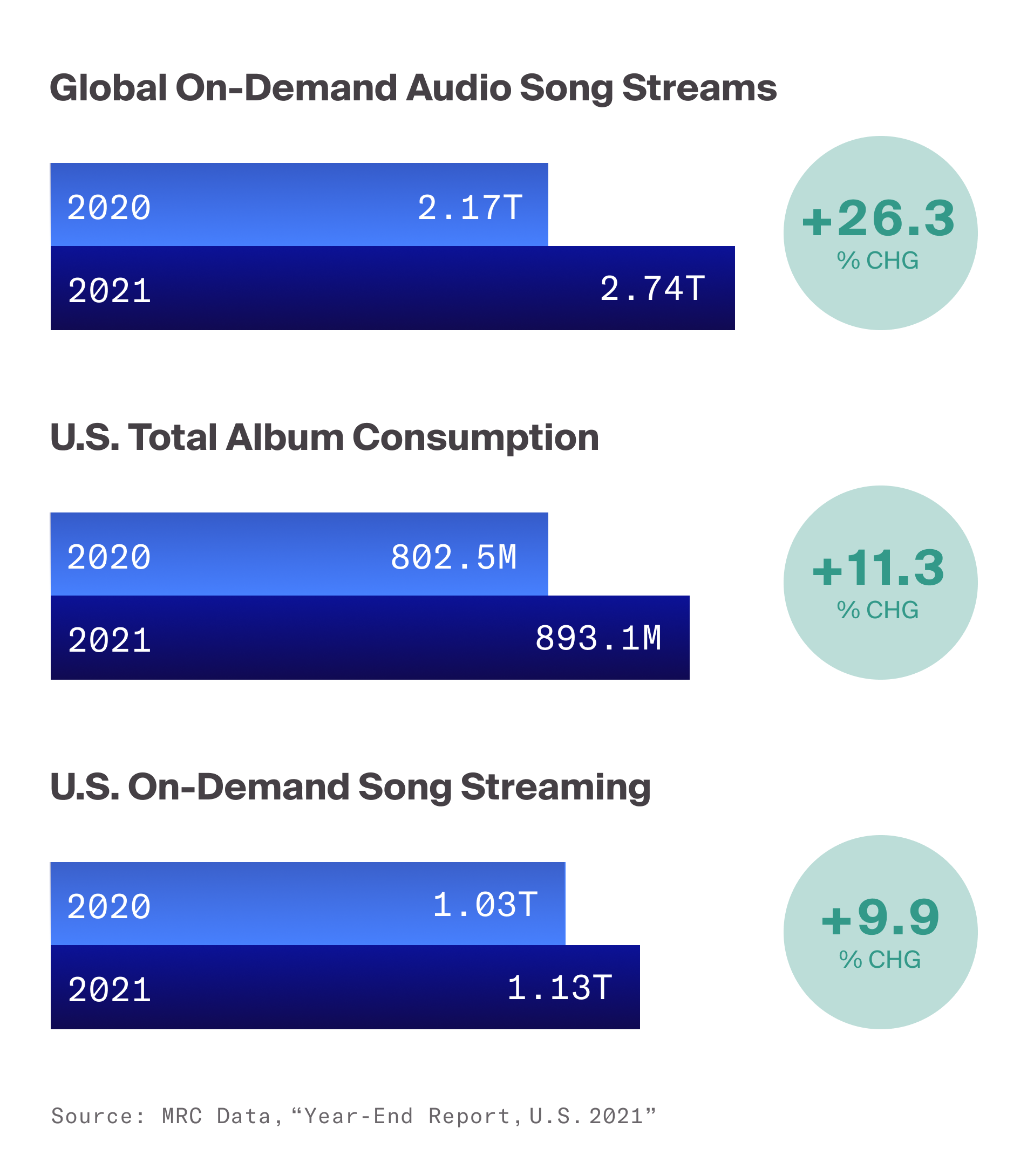In Search of Music Royalty Yields Are King

CAIS. sponsored by
Investors’ continued hunger for returns has seen them scour both public and private markets to replace lost earnings from bonds and other traditional sources of distribution. This yearning has benefited private lending strategies such as direct lending, which currently hit a record high of over $480 billion, up from $156 billion in December 2016.[1] One specific area in which we are seeing significant interest is asset-based finance, and in particular, music royalties that give investors access to cash flow associated with music catalogs of popular artists. After a strong 2021, music royalties continue to attract investor interest at rising valuations, with more high-profile deals expected to hit the market in 2022. Here, we find out what’s driving the trend, as well as the characteristics of music royalties that make the strategy a potentially attractive investment for income-seeking investors.
Cash in, artists take advantage of streaming trends
Artists cashing in on the work of a lifetime by selling their music catalogs is nothing new, although the movement has been gaining momentum in recent times. In December 2021, The New York Times[2] reported that Bruce Springsteen sold his catalog to Sony for an estimated $550 million, which may be the highest amount ever paid to a solo musician. Springsteen joins others such as Bob Dylan, Paul Simon, Neil Young, Stevie Nicks and the Red Hot Chili Peppers, all of whom have sold their catalogs in recent years.
So, what can motivate these superstars to give up their music?
As the pandemic spread across the world, many aspects of our consumption patterns went digital. The demand for music streaming and global subscription services grew rapidly. In the US alone, music consumption grew by 11.3% in 2021.[3] Streaming of On Demand audio in the US grew 9.9%, reaching 1.13 trillion songs, while streaming globally grew 26.3% to over 2.74 trillion.[4] Additionally, in the US, MRC data found that catalog music, which is composed of songs older than 18 months by an artist, represented 75% of all audio streams, an increase of 66% over 2020.

Some asset managers leveraging the CAIS platform attribute this growth largely to the pandemic, which halted music touring and live performances. He noted that artists make a substantial part of their income through excursions and sought an alternative source of income for their personal consumption.
With such a strong demand profile for streaming music, it’s no surprise that artists are looking to monetize the trend.
reach the opportunity
As mentioned earlier, music royalties fall under asset-based finance — a sub-strategy of personal lending — and exhibit a number of attractive features for income-generating investors. An important feature typically associated with music royalties is floating rate cash flow, which provides interest rate sensitivity and reduced tenure relative to fixed rate loans. Additionally, given that people consume music regardless of the broader market or economic cycle, music royalties can provide a diversification advantage to a broader portfolio. Finally, there are several factors of return that not only make income attractive on a relative basis but can also provide the potential for capital conservation. In addition to royalties paid on a catalog of songs, the total return may be increased by an origination fee, while the specific nature of the underlying catalog means that a complication premium may also be offered to investors.
To sum it up, given the outlook for interest rates and the ongoing lack of income opportunities from traditional sources, music royalties can provide a diversified income stream as part of an allocation of personal loans and within a well-diversified portfolio. Is.
[1] Prekin Pro, until June 2021
[2] The New York Times, “$550 Million Springsteen Deal? It’s Glory Days for Catalog Sales.”, https://www.nytimes.com/2021/12/20/arts/music/bruce-springsteen-catalog.html, December 20 , 2021
[3] MusicAlly, “Music consumption in US increased by 11.3% in 2021, says MRC data”, https://musical.com/2022/01/07/music-consumption-grew-in-us-2021-mrc -data/, January 7, 2022
[4] MRC data, “Year-End Report, US 2021”, https://mrcdatareports.com/wp-content/uploads/2022/01/MRC_YEAREND_2021_US_FNL.pdf, accessed January 18, 2022





